Annapurna Trekking
Nestled in the heart of the Himalayas, Annapurna Trekking beckons adventurers with its awe-inspiring vistas and rugged terrain. As trekkers navigate through winding trails and quaint villages, they are greeted by towering peaks and serene valleys that paint a picture of unparalleled beauty.
But beyond the majestic landscapes lies a world of challenges and discoveries waiting to be uncovered. From the best time to embark on this journey to essential safety tips and packing advice, the Annapurna region offers a tapestry of experiences that will captivate even the most seasoned trekker.
Key Points
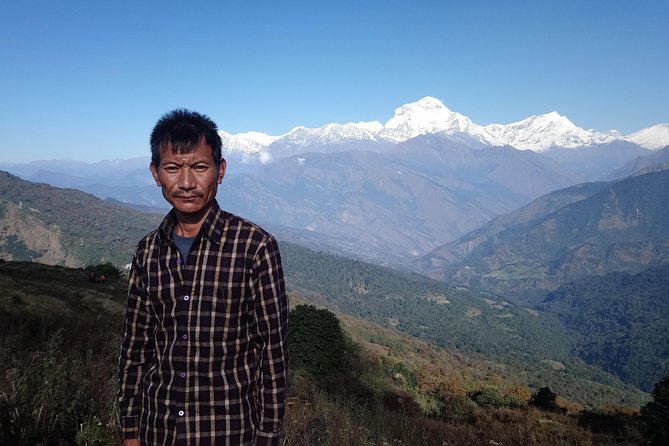
- Prepare with essential gear and acclimatize for a safe trekking experience.
- Obtain necessary permits and comply with regulations for a smooth journey.
- Explore diverse accommodation options catering to various comfort levels.
- Prioritize safety by recognizing altitude sickness symptoms and emergency procedures.
Trekking Routes in Annapurna Region
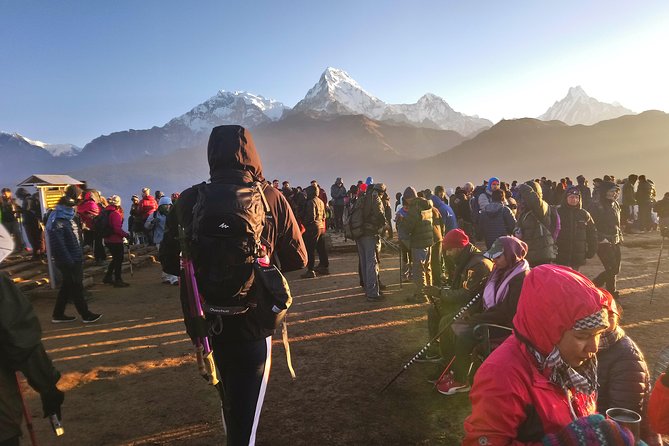
Offering a myriad of scenic trails and breathtaking vistas, the Annapurna Region boasts some of the most sought-after trekking routes in the world. Trekking in this region not only provides an opportunity to take in the stunning natural beauty but also to experience the rich local cuisine and cultural traditions.
Travelers can indulge in authentic Nepalese dishes like dal bhat (rice and lentils), momos (dumplings), and thukpa (noodle soup) along the trekking routes, gaining a true taste of the local flavors. On top of that, the Annapurna Region is renowned for its diverse cultural experiences, with encounters with Gurung, Magar, and Thakali communities, offering a glimpse into their unique traditions, rituals, and way of life.
Best Time to Trek in Annapurna
When planning your trek in the Annapurna Region, understanding the best time to embark on this adventure is key to ensuring an enjoyable and memorable experience amidst the stunning landscapes and cultural richness of the area. Here are some essential points to consider:
-
Weather conditions: The best time to trek in the Annapurna region is during the spring (March to May) and autumn (September to November) seasons when the weather is stable, offering clear skies and excellent visibility.
-
Trekking gear: Proper trekking gear is crucial for a successful Annapurna trek. Ensure you have sturdy hiking boots, layered clothing for varying temperatures, a good quality backpack, trekking poles for stability, and a reliable sleeping bag.
-
Acclimatization: Take time to acclimatize to the altitude to prevent altitude sickness and enjoy the trek to the fullest.
Permits and Regulations for Trekking
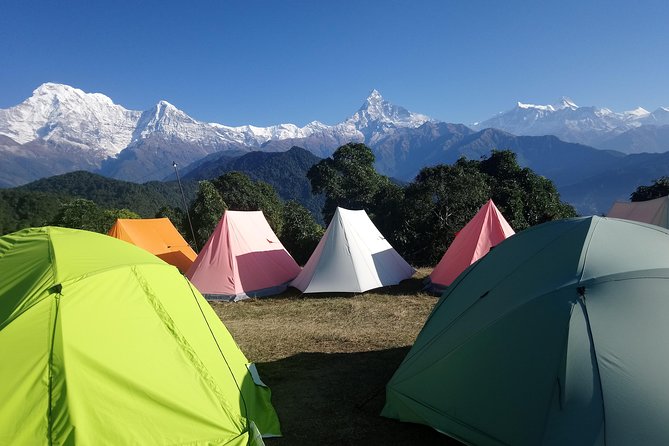
To engage in trekking in the Annapurna region, travelers must adhere to specific permits and regulations established by the local authorities.
Trekking regulations in this area are in place to ensure the safety of trekkers and preserve the natural environment. Permit requirements vary depending on the trekking route chosen and the duration of the trek.
It’s essential for trekkers to obtain the necessary permits before embarking on their journey to avoid any legal issues. These permits also help authorities keep track of the number of people trekking in the region at any given time, contributing to better management of the trails and facilities.
Understanding and following these regulations and permit requirements is crucial for a smooth and enjoyable trekking experience in the Annapurna region.
Accommodation Options on the Trek
For trekkers planning their journey through the Annapurna region, exploring the diverse range of accommodation options along the trekking routes is a pivotal aspect of preparing for their adventure.
When trekking in the Annapurna region, trekkers can choose from various lodging choices ranging from teahouses to guesthouses. These accommodations offer basic facilities such as shared bathrooms, simple bedding, and communal dining areas.
Trekkers seeking more comfort can opt for lodges that provide private rooms with attached bathrooms and hot showers. Plus, some lodges offer amenities like Wi-Fi and charging facilities for electronic devices, enhancing the overall trekking experience.
Safety Tips for Annapurna Trekking
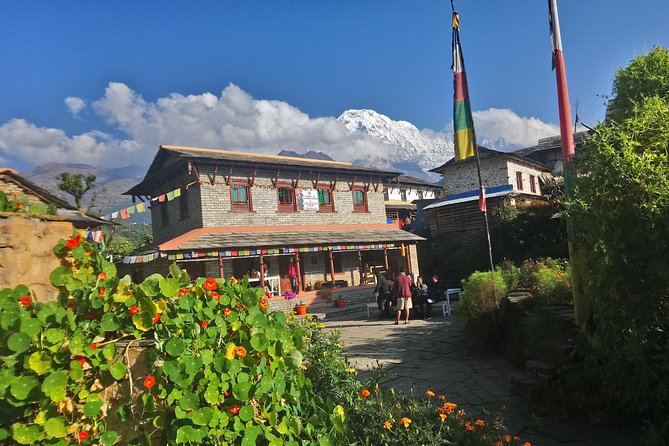
Navigating the breathtaking trails of Annapurna requires trekkers to prioritize safety above all else, ensuring a successful and enjoyable trekking experience. When trekking in high altitudes like Annapurna, altitude sickness is a significant concern. Trekkers must acclimatize properly, stay hydrated, and be aware of symptoms like headaches and dizziness. Emergency procedures are crucial; trekkers should know the location of the nearest medical facilities and emergency contacts. Below is a table summarizing key safety tips for Annapurna trekking:
| Safety Tips | Details |
|---|---|
| Altitude Sickness | Acclimatize, stay hydrated, watch for symptoms like headaches |
| Emergency Procedures | Know location of medical facilities, have emergency contacts |
Packing Essentials for the Trek
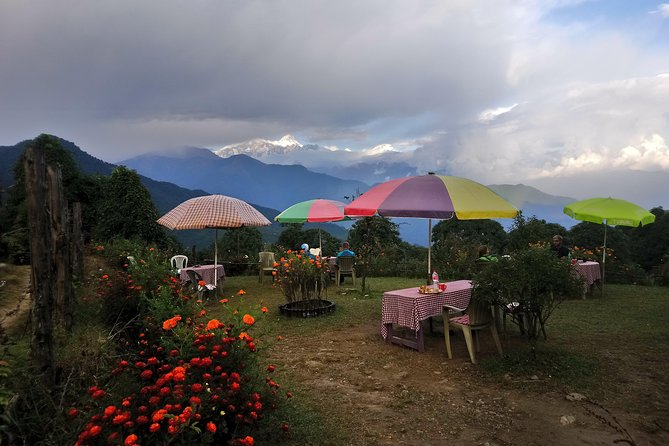
Packing smartly ensures trekkers have all the necessary gear for a successful Annapurna adventure. When preparing for the trek, it’s vital to consider the weather conditions and pack accordingly. Here are three essential items to include in your packing list:
-
Layered Clothing: Due to the varying weather conditions along the Annapurna trail, it’s crucial to pack lightweight, moisture-wicking clothing for warmth and comfort.
-
Sturdy Trekking Boots: Invest in high-quality, waterproof trekking boots to navigate the rugged terrain comfortably and protect your feet from the elements.
-
Backpack with Rain Cover: Carry a durable backpack with a rain cover to keep your essentials dry during unexpected rain showers and ensure easy access to your gear throughout the trek.
Recommended Itinerary for Annapurna Trek
When embarking on the Annapurna trek, travelers can maximize their experience by following a well-planned itinerary that showcases the beauty and challenges of the region. A recommended itinerary typically includes key stops like Pokhara, Ghorepani, and Poon Hill for breathtaking sunrise views.
Trekking gear such as sturdy hiking boots, warm clothing, a good backpack, and a reliable water bottle are essential. Along the journey, trekkers can enjoy the local cuisine, enjoying dishes like dal bhat, momos, and thukpa to refuel and experience the flavors of Nepal.
Taking time to acclimatize and enjoy the stunning landscapes while trekking through diverse terrain will make for a memorable Annapurna adventure.
Common questions
Are There Any Specific Cultural Customs or Etiquette to Be Aware of While Trekking in the Annapurna Region?
When trekking in various regions, travelers must be mindful of cultural practices and local customs to respect the community. Observing etiquette is crucial for positive social interactions. Being culturally aware enhances the journey’s experience.
What Are Some Lesser-Known Trekking Routes in the Annapurna Region That Offer a Unique Experience?
When looking for hidden trails and scenic views, travelers can explore lesser-known trekking routes in the Annapurna region. These paths lead to remote villages, offering an authentic cultural experience away from the more popular tourist routes.
Is It Possible to Hire a Local Guide or Porter for the Trek, and What Are the Benefits of Doing So?
Yes, it’s possible to hire a local guide or porter for the trek. Safety measures and knowledge of local cuisine are enhanced. They offer insights into weather conditions and help with trekking gear, enriching the overall experience.
How Can Altitude Sickness Be Prevented or Managed While Trekking in the Annapurna Region?
To prevent altitude sickness, travelers should acclimatize gradually, stay hydrated, and avoid alcohol and strenuous activity. Managing altitude sickness involves descending to lower elevations, using medication like acetazolamide, and seeking medical help if symptoms worsen.
Are There Any Opportunities for Volunteering or Giving Back to the Local Communities During the Trekking Experience in Annapurna?
Community involvement and sustainable tourism can enrich a trekking experience by offering opportunities to give back to local communities. Volunteering initiatives, such as supporting local schools or conservation projects, can create a more meaningful and impactful journey.
Last Words
Set out on a journey of a lifetime in the Annapurna region, where towering peaks, lush valleys, and diverse wildlife await. With the right preparation and a sense of adventure, trekking in Annapurna offers an unforgettable experience for nature enthusiasts and outdoor lovers.
From stunning landscapes to cultural encounters, this Himalayan paradise promises to leave you with lasting memories and a newfound appreciation for the beauty of the natural world.
Explore, discover, and create your own Annapurna adventure today.